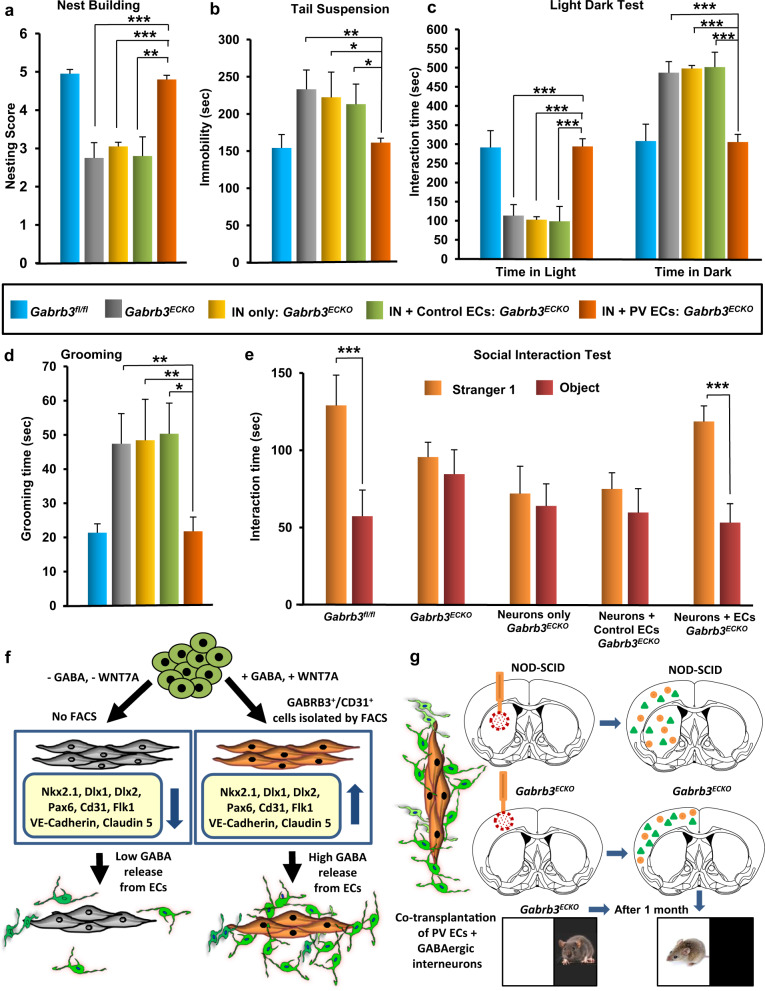Fig. 5. Co-transplantation of human periventricular endothelial cells with human interneurons in cortex ameliorates behavioral abnormalities in Gabrb3ECKO mice.
a–e Quantification of behavioral tests performed in five different groups of mice: 1) sham Gabrb3fl/fl, 2) sham Gabrb3ECKO, 3) interneurons only transplanted into the cortex of Gabrb3ECKO mice, 4) interneurons + control endothelial cells derived without GABA and WNT7A co-transplanted (1:1 ratio) into the cortex of Gabrb3ECKO mice and 5) interneuron + periventricular endothelial cells co-transplanted (1:1 ratio) into the cortex of Gabrb3ECKO mice. In all transplanted and sham surgery mice, tests were done 30 days post transplantation. In each case, data represent mean ± SD, (n = 6, *P < 0.05, Student’s t test). a Nesting behavior was assayed by a five-point nesting score. Interneuron + periventricular endothelial cell co-transplanted mice showed normal nesting behavior, similar to sham control mice. Interneuron-only transplanted mice and interneuron + control endothelial cell co-transplanted mice showed poor nest building abilities, similar to Gabrb3ECKO mice. b Tail suspension test. Interneuron + periventricular endothelial cell co-transplanted Gabrb3ECKO mice showed an immobility time comparable to sham control mice, while interneuron-only transplanted mice and interneurons + control endothelial transplanted mice showed longer immobility time, similar to Gabrb3ECKO mice. c Quantification of exploration time in light–dark box test. Interneuron + periventricular endothelial cell co-transplanted Gabrb3ECKO mice spent similar time exploring light and dark sides of the box, as observed in sham control mice. Interneuron-only transplanted Gabrb3ECKO mice and interneuron + control endothelial cell co-transplanted Gabrb3ECKO mice behaved like Gabrb3ECKO mice and continued to spend more time in the dark side of the box. d Quantification of self-grooming time. Interneuron + periventricular co-transplanted Gabrb3ECKO mice showed shorter grooming times, comparable to sham control mice. On the other hand, interneuron-only transplanted Gabrb3ECKO mice and interneuron + control endothelial cell co-transplanted Gabrb3ECKO mice continued to show long grooming times, similar to that observed for Gabrb3ECKO mice. e In a three-chamber social interaction test, interneuron + periventricular endothelial cell co-transplanted Gabrb3ECKO mice spent a significantly longer amount of time interacting with a stranger mouse than with an inanimate object, similar to that observed in sham control mice. In contrast, behavior of interneuron only-transplanted Gabrb3ECKO mice and interneuron + control endothelial cell co-transplanted mice were reminiscent of Gabrb3ECKO mice. They did not show any specific preference for the stranger mouse and spent similar time exploring both the stranger mouse and an inanimate object. These behavioral tests show that co-transplantation of interneurons with human periventricular endothelial cells led to an effective rescue of behavioral deficits in Gabrb3ECKO mice after 1 month of transplantation. f Summary schema illustrating the importance of WNT7A/GABA addition to the differentiation medium and isolation of GABRB3+/CD31+ endothelial cells by FACS for the efficient generation of human periventricular endothelial cells, that release high levels of GABA and promote robust neuronal chemoattractivity and migration. g Summary schema depicting a novel co-transplantation strategy of human periventricular endothelial cells with human GABAergic interneurons into multiple brain regions in two different mouse models (NOD-SCID and Gabrb3ECKO) that independently confirm robust cell migration and distribution. The benefit of this co-transplantation manifested as an improvement in behavioral function (light–dark box illustrated in schema) in Gabrb3ECKO mice, signifying the importance of novel angiogenesis-based treatment strategy for psychiatric disorders.

